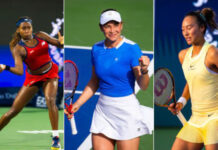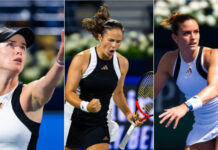Every point in tennis starts with serve and return. It doesn’t matter at which level you play, it is guaranteed that the first two shots will always be the same. A lot of players practice serves in every training session, but this habit doesn’t apply to the return. If you want to be prepared for demands of competitive matches, you have to take care of your return. To make your returns more effective, use tips from our monthly contributor, coach Marcin Bieniek, founder of instructional Enjoy Tennis Blog.
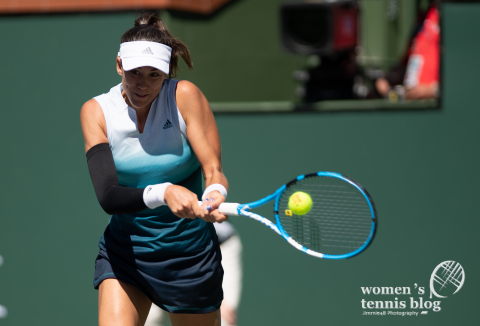
Return is a response to serve, but it should never be played without a goal. When we have a plan for the next point, we can be sure that we won’t be forced to react at the last second. To be well prepared for an effective return, technical and tactical skills have to be implemented into daily routines in order to form automated habits.
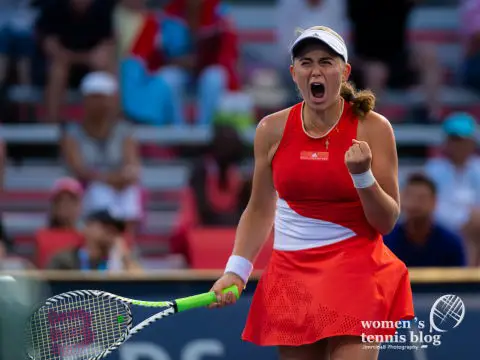
If you want to break your opponent’s serve more often, you should:
1. Work on technical aspects
From a technical point of view, return is not played in the same manner as a regular forehand or backhand. It is especially visible while responding to powerful serves. Players have to shorten backswing to be able to react faster and control the ball more. Additionally, it is important to learn to move forward while returning off wide serves in order not to give easy opening to the opponent on the next shot.
2. Be aware of tactical options
Technique is important, but proper decision-making has to be learned for the effective use of return in winning points. There are different tactical solutions when it comes to the first and second serves.
While responding to the first serve, players have to focus on keeping the ball deep, without adding their own power. The power is already in the serve, so focus has to be placed solely on control. At the top level, players hit first serve returns into the center of the court, because it forces rivals to move away from the ball to hit another shot. It is a good option to consider at any level.
On the other hand, while dealing with second serves, players should create advantage with their own shots, so using power or placing the ball to the side zones are tactical solutions that immediately put the server into a more defensive position. A little bit more risk has to be taken, so mistakes will happen, but it shouldn’t stop players from making good tactical decisions in the next attempts.
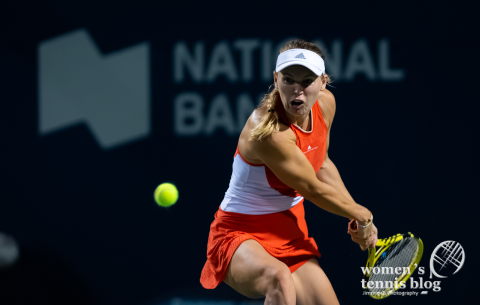
3. Put pressure on the opponent
We are all aware of possible destructive impact of stress on performance, so we can use this knowledge to make the opponent’s game more uncomfortable. Too many times players miss first serve returns and they are not aware of mental consequences of this action. A missed ball not only gives the point to the opponent, but it also builds their confidence. Just by placing the return in the court, we force the opponent to react and show more skills in order to win the point. Additionally, we send information that this serve is not really that good to straightly win the point, so there is a chance that the server will risk more in the next attempts.
Putting pressure is also important while responding to second serves. Every time we hit winners on the second delivery or put the opponent into defensive situations, the opponent will be aware of their weak serve. After many successful responses, we can be sure that the opponent will start to make more double faults in crucial moments, being afraid of hitting another weak second serve.
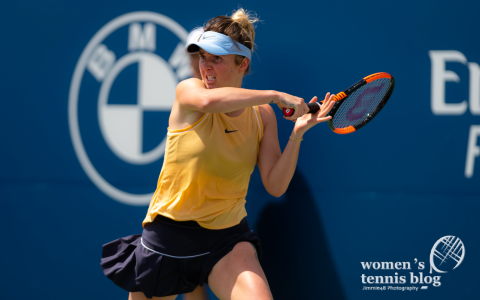
4. Have a plan
Never start a point without a plan. To break your opponent’s serve, you have to be ready — you have to know exactly where you want to return, why you want to do it and what you can potentially achieve by doing it. From time to time you can win matches without planning your actions in advance, but to have consistently great results you have to make both physical and mental effort. Use 20 seconds between points to take conclusions from the last point and make sure you step to the baseline knowing what you will do next.
The return of serve is neglected by many players and coaches. Spending most of the time on hitting forehands and backhands from different areas of the court won’t win you matches, because without a good return you will never get to the point where you can use your strongest skills. Every time you play, make sure you consciously approach returning and you know exactly how to use shots to create tactical advantage.
MORE ARTICLES BY TENNIS COACH MARCIN BIENIEK:
- How to deal with a lost tennis match
- Tennis strategy to play well in hot environment
- How to improve footwork in tennis, 3 crucial moves to practice
- Transferring tennis practice performance to the tournament environment
- Hardcourt tennis tips, four skills you must work on
- Self-rate your practice session
- Recovery and healthcare techniques to improve your tennis
- How nutrition affects our mental readiness in tennis
- Does one need private tennis lessons?
- How to maximize quality of tennis training sessions
- Post-practice routine for best tennis results
- How to play tennis in the summer heat without getting exhausted
- The reasons you absolutely have to play tennis on all surfaces
- 3 simple products parents miss to buy to help their kids excel in tennis
- How to improve reaction skills in offensive, fast-paced tennis
- How to control anger and frustration to win a tennis match
- Tennis tips: 3 areas that cost you too many points
- How to practice serve the right way
- Coaching tips: How to avoid mistakes in tennis
- Things to (not) do on vacation to improve your tennis game
- How to translate your tennis practice into match wins
- How to build team spirit in tennis
- How to become a master of claycourt tennis
- How to make your serve more effective
- How to choose the best tennis racquet to fit your level, playing style and body type
- How to handle playing tennis in sunny conditions and even take it to your advantage
- 5 portable fitness tools for serious tennis players
- Best foam roller exercises for tennis players



